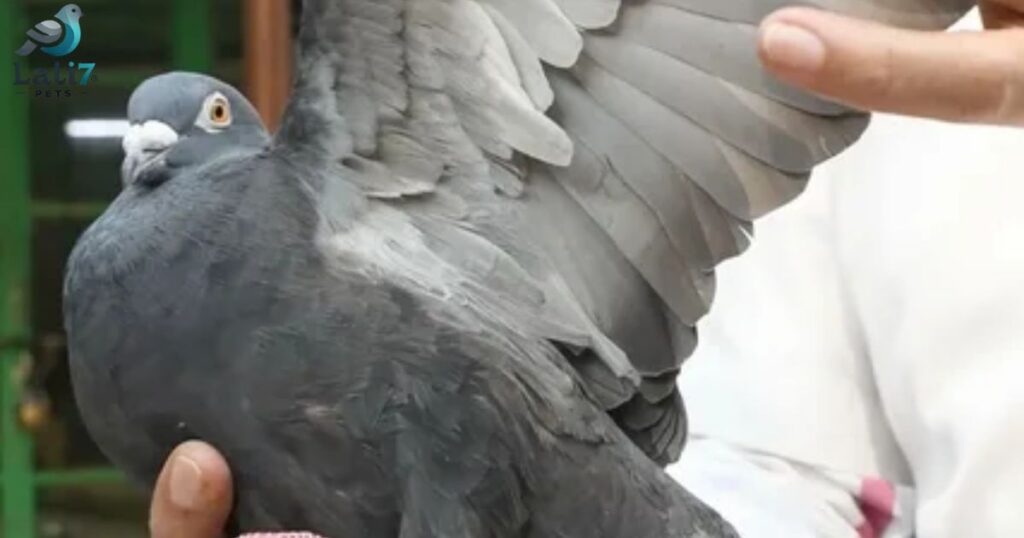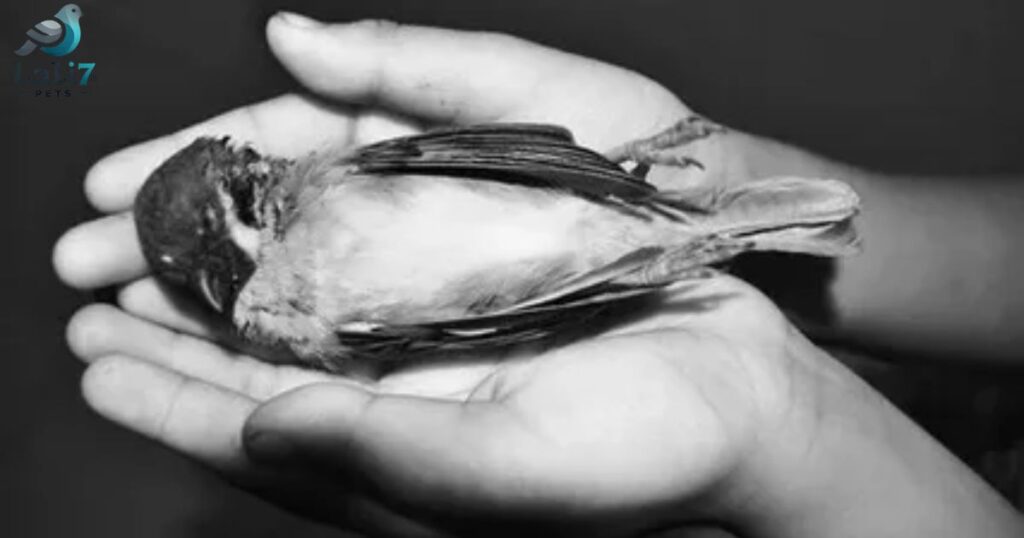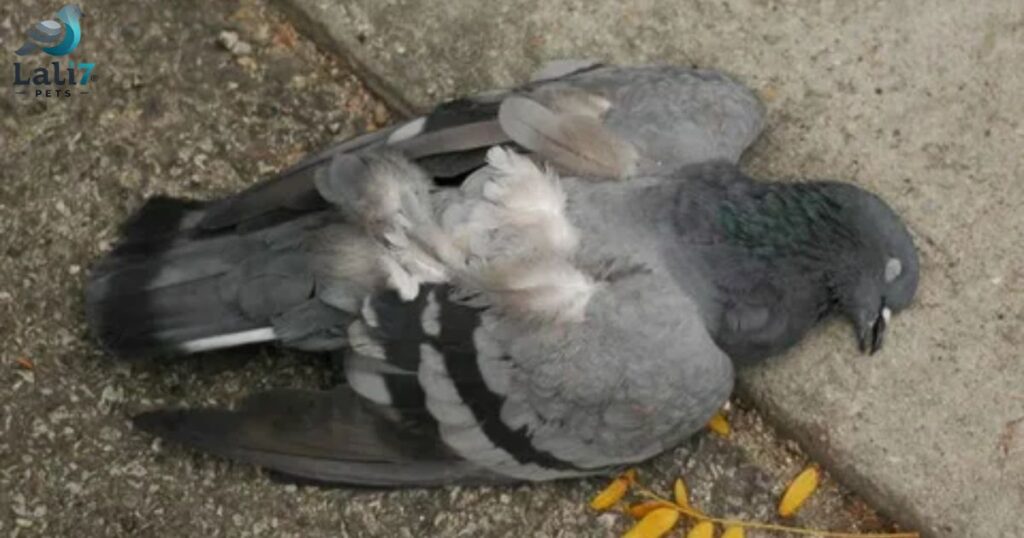Watching a beloved pigeon fall ill is heartbreaking. If you’ve ever raised or cared for pigeons, you know how quickly things can change. Unlike other pets, pigeons often hide their pain, making it difficult to tell when something is wrong. In this detailed guide, we’ll walk you through the signs a pigeon is dying, explain how to comfort them, and show you how to act fast when they need help.
1. Signs a Pigeon Is Dying of Old Age

Just like humans, pigeons slow down with age. A healthy pigeon can live 10 to 15 years, but by the time they reach their senior years, changes become noticeable. Here are some early signs a pigeon is dying of old age:
- Lack of energy – Older pigeons sleep more and are less active.
- Weight loss – You may notice their keel bone sticking out more than usual.
- Feather changes – Dull, ragged, or missing feathers are common in aged pigeons.
- Weakness or trembling – Older pigeons may struggle to perch properly.
- Cloudy eyes or poor vision – Senior birds may bump into things or fly poorly.
For a great resource on understanding pigeon aging, check out this pigeon care guide.
Anecdote: “My 14-year-old pigeon, Bella, started sitting in the corner of her loft for hours. She used to greet me every morning. When she stopped, I knew her time was near.”
2. How to Help a Dying Pigeon
When you spot signs that a pigeon is dying, time is crucial. While some situations can be reversed, others require care and comfort in their final hours. Here’s how to help a dying pigeon:
Step-by-step guide:
- Move the pigeon to a quiet, warm space.
- Use a small box lined with a towel.
- Keep them away from loud sounds and other pigeons.
- Hydrate them.
- Offer water via a dropper if they can’t drink.
- You can add electrolytes to their water.
- Feed soft food.
- Mashed peas, baby bird formula, or soaked seeds.
- Contact an avian vet immediately.
- Find one nearby using this avian vet directory.
- Provide gentle warmth.
- Use a heating pad under half the box or a lamp.
3. How to Comfort a Dying Bird

Knowing how to comfort a dying bird is a kindness every animal lover should understand.
- Speak softly – Talk in a calm voice to ease their anxiety.
- Keep them wrapped lightly – A soft cloth can help them feel safe.
- Dim the lights – A peaceful environment lowers stress.
- Minimize handling – Too much touching can add stress.
Anecdote: “When I held my pigeon close and sang softly, I could feel her relax. I knew she felt safe.”
For emotional support during this time, consider reading this helpful pet loss support guide.
4. Signs a Bird Is Dying of Old Age
While pigeons have specific behaviors, many signs a bird is dying of old age are universal:
- Fluffed-up feathers for long periods
- Difficulty breathing
- Reduced response to stimuli
- Sudden weight loss
- Unusual droppings
You can explore a full list of avian end-of-life symptoms from The Bird Vet Melbourne.
5. How to Know if a Pigeon Is Pregnant
It’s easy to confuse illness with pregnancy. If you’re wondering how to know if a pigeon is pregnant, here are the signs:
- Sitting in one place for long periods
- A slight bulge in the lower abdomen
- Nest-building behavior
- Coos more frequently
A full guide on pigeon reproduction is available here.
If you misread these signs, you might mistake a healthy, pregnant pigeon for a sick one—so be careful!
6. Dying Pigeon Pose: A Misleading Term
In yoga, the “dying pigeon pose” refers to a variation of the pigeon pose. It’s often confused in online searches. The actual yoga position helps stretch the hips and isn’t related to actual bird health.
If you were looking for the yoga pose, you can learn it step-by-step here.
7. Male Cockatiel Dying Symptoms
Many people confuse cockatiel symptoms with those of pigeons. Here’s what to look for in male cockatiel dying symptoms:
- Tail bobbing with each breath
- Nasal discharge or crusting
- Lethargy and sitting at the bottom of the cage
- Discolored droppings
For more information, visit this cockatiel care page.
8. Signs a Budgie Is Dying of Old Age

Budgies are smaller but show similar end-of-life symptoms. Key signs a budgie is dying of old age include:
- Excessive sleeping
- Ruffled, puffed-up feathers
- Weak chirping or no vocalization
- Labored breathing
You can see more about aging budgies on BirdTricks.com.
Anecdote: “My budgie stopped singing entirely before she passed. That silence told me more than anything.”
FAQ:
1. How can you tell a pigeon is dying?
A dying pigeon often shows extreme lethargy, labored breathing, closed or sunken eyes, and an inability to eat or perch properly.
2. How can I save a dying pigeon?
Place it in a warm, quiet space, offer clean water and soft food, and seek immediate help from a wildlife rehabilitator or avian vet.
3. What are the symptoms of a dead pigeon?
A dead pigeon will be unresponsive, stiff (rigor mortis sets in), cold to the touch, and show no breathing or blinking reflex.
4. How to tell if a pigeon is ill?
Sick pigeons often have fluffed-up feathers, reduced appetite, watery droppings, sneezing, and avoid flying or social interaction.
5. How do you know if a pigeon is sad?
A sad pigeon may coo less, isolate from its flock, stop playing or grooming, and appear generally inactive or withdrawn.
Final Thoughts: Prepare With Compassion
Whether you’re dealing with an elderly bird, sudden illness, or unexplained behavior, recognizing the signs a pigeon is dying is the first step in offering comfort and care. Not every illness ends in death, so don’t lose hope—but always act fast.
And when you’re ready to give your pigeons the best chance at a long, healthy life, invest in:
- High-quality feed
- Proper vitamins and supplements
- Vaccinations
- Clean, safe loft environments
Being prepared will not only reduce suffering but could also save a life.

